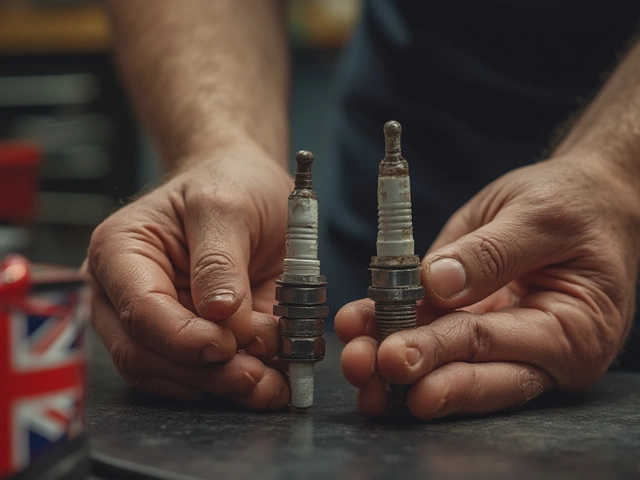If you're like most people, car maintenance isn't always at the top of your to-do list—until something goes wrong. But keeping an eye on your radiator's health can save you a lot of hassle down the road. So, how do you know if your radiator's in trouble?
Let's start with the basics. Your radiator is key to keeping your car from overheating. It manages the flow of coolant that absorbs engine heat and dispels it. When your radiator goes bad, it can't do this job efficiently, which can lead to big problems.
One of the first signs might be an overheating engine. If you notice the temperature gauge creeping up or warning lights popping up, don't ignore them. Another red flag is coolant leaks. If you see green, yellow, or pink fluid under your car, it might be time to investigate.
Feeling extra proactive? Pop the hood and take a look. A discolored or clogged radiator could be evidence of a problem. Want to avoid these issues altogether? Regularly check your coolant levels and flush the system according to your vehicle's schedule.
- Recognizing Early Warning Signs
- Common Symptoms of a Bad Radiator
- Quick Checks and Maintenance Tips
- When to See a Professional
Recognizing Early Warning Signs
Keeping an eye out for early warning signs of a bad radiator can save you from bigger headaches and expenses down the road. So, what should you look for?
Temperature Climbing
One of the most immediate signs of trouble is your car's temperature gauge. It should sit comfortably in the middle. If it's climbing into the red zone, there's a good chance your radiator isn't cooling as it should. When you spot this, don't wait around to see what happens. Get it checked out.
Coolant Puddles
Seen any colored liquid on the ground where you parked? That's likely coolant, a direct hint that something might be up with your radiator. The coolant might leak from damaged hoses, a faulty seal, or worse, a crack in the radiator itself. Either way, it's a sign to roll up your sleeves or head to a mechanic.
Smell of Trouble
Sometimes, your nose knows what's up before your eyes do. A sweet smell coming from your car when it's running could mean a radiator leak. It might smell nice, but it's far from ideal.
- Check the coolant levels regularly.
- Listen for unusual noises from the engine bay.
- Look for rust or discoloration around the radiator.
Techy Tip
Ever worry if your car's overheating, but you're not sure? A neat gadget called an infrared thermometer can help. Just point it at the radiator and other engine parts to get the real-time temperature. It can give you a better sense if something's off.
Recognizing these signs early can help you avoid a bad day on the highway. Stay ahead of the game with these simple checks and prevent a tiny problem from turning into a wallet-draining ordeal.
Common Symptoms of a Bad Radiator
Your car radiator plays a crucial role in keeping your vehicle's engine at the right temperature. When it acts up, it can lead to a world of problems. So, what should you be on the lookout for?
Engine Overheating
The most obvious sign of a bad radiator is engine overheating. If your car's temperature gauge starts heading into the red zone, it’s a clear indication that something’s not right. Regular overheating could mean your radiator isn’t cooling the engine as it should.
Coolant Leaks
Notice any puddles of green, yellow, or pink fluid under your vehicle? Coolant leaks can be a tell-tale sign of radiator issues. Check under your car regularly, especially after it's been parked for a while. Leaks can occur due to a crack or potentially a loose hose connected to the radiator.
Discolored or Sludgy Coolant
The coolant in your radiator should be a bright and clear color. If it looks rusty, discolored, or turns into sludge, it might be the result of corrosion inside the radiator. This can prevent the efficient flow of coolant and lead to engine heating problems.
Blocked or Damaged Radiator Fins
Inspect the metal fins on your radiator. If they’re bent or blocked (by dirt or other debris), this can hamper airflow. Less airflow means less heat getting expelled from your engine. Smooth, unobstructed fins optimize cooling efficiency.
Unusual Noises
Listen for noises while your car is running. A bad radiator could cause knocking or ticking sounds. It might be because of air pockets caused by low coolant levels or a clogged system. Don’t ignore these sounds — they’re your car’s way of asking for help.
If you're experiencing any of these symptoms, it's wise to check things out sooner rather than later. A malfunctioning radiator can lead to expensive repairs if it causes your engine to overheat continuously. Quick actions can save you a ton of money and stress down the road.

Quick Checks and Maintenance Tips
Staying on top of your car radiator problems doesn't have to be rocket science. With a few simple checks and a bit of regular maintenance, you can keep your radiator in good condition and avoid those headache-inducing issues.
Regular Inspections
Start with regular visual inspections. Whenever you pop the hood for anything else, take a quick glance at your radiator. Look for any signs of corrosion, leaks, or discoloration. These can be early indicators of trouble.
Don't just eyeball it, though. Feel free to give your radiator hoses a gentle squeeze. If they're excessively soft or cracking, it might be time for new ones.
Check Coolant Levels
Your coolant levels are also crucial. Low levels can lead to overheating. Make it a habit to check the coolant reservoir often. If it's consistently low, you might have a leak somewhere.
"Keeping your coolant at the proper level is vital for maintaining engine temperature," says Mike Thompson, a veteran mechanic at AutoCare Daily.
Flush the System
It's not just about levels, though. Every two years or so, flushing the coolant system can remove any rust or sediment buildup. This might seem like a hassle, but it's a major player in avoiding clogged radiator passages.
- Locate the radiator's drain plug under your car.
- Place a bucket underneath and remove the plug, allowing old coolant to drain out.
- Close the plug, refill with a radiator flush solution, and run the engine.
- Drain again, then refill with fresh coolant.
Consult your vehicle's manual for specific recommendations, as some modern cars require a bespoke approach.
Monitor Engine Temperature
Lastly, keep an eye on that temperature gauge while driving. A steady rise without cooling can mean your radiator isn't doing its job. Catching this early can save you from potential engine damage.
And there you have it, some straightforward tips to keep your radiator in tip-top shape. The small effort in upkeep can pay off by keeping your car, and you, cool on the road.
When to See a Professional
So, you've noticed some odd behavior from your radiator, but when is it time to call in the big guns? Taking your car to a professional is sometimes the best move, especially when symptoms start to look dire or confusing.
First, if the engine's overheating consistently and quickly, it's not something to gamble with. Engines have a nasty habit of turning minor issues into catastrophic problems if they get too hot. A professional mechanic can run diagnostics that accurately pinpoint the issue, which might even be beyond the radiator.
Next up are coolant leaks. These can be more than a minor nuisance because they indicate a breach in the cooling system. While you might think some duct tape can do the job, that's more of a myth than a solution. Professionals have the tools and expertise to fix leaks properly before they cause more damage.
Another scenario to consider is if overheating or leaking happens time and again, even after you've tried basic maintenance. It could suggest an underlying issue with the radiator's integrity, like corrosion or damage that needs professional-grade solutions.
While it could be tempting to try DIY repairs, advanced equipment like pressure testers or computer diagnostics used by mechanics can get to the root of problems far more efficiently.
And hey, don't vibe your way through it alone. Good auto shops will provide a thorough checkup, often covering everything from the hoses to the thermostat, ensuring your car isn't at risk down the road. Consider it preventive health care, like getting the right shots before flu season.
| Action | Professional's Advantage |
|---|---|
| Identify complex problems | Use of specialized diagnostic tools |
| Fixing radiator leaks | Access to appropriate parts and sealants |
| Regular maintenance checks | Comprehensive inspection of cooling system components |
But, here's a tip: not all problems require an expensive fix. Sometimes a bit of professional advice is worth its weight in gold for peace of mind and vehicle safety. Handling a faulty radiator doesn't have to be a headache when done right.






